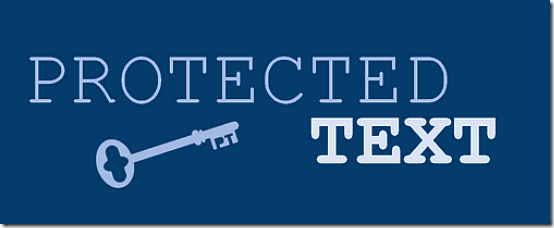
Securing Your Thoughts: Exploring the World of Protected Notes and Protected Text
In today’s digital age, information holds unprecedented value. The ease of communication and data sharing has transformed the way we live and work. However, with this convenience comes the responsibility to protect our sensitive information from unauthorized access. Whether it’s personal thoughts, confidential business strategies, or creative ideas, securing our data is of utmost importance.
In this article, we delve into the world of protected notes and protected text, understanding their significance in safeguarding our valuable thoughts and ideas. We will explore various methods of encryption and security measures that can be employed to ensure data confidentiality. By the end of this article, we aim to empower you with the knowledge to keep your information safe and secure.
The Significance of Protected Notes
Protected notes have become an essential aspect of modern life, especially with the increasing reliance on digital devices and applications. Whether it’s jotting down personal reflections, brainstorming ideas for a project, or storing critical business information, the digital notepad has replaced traditional pen and paper.
However, with the convenience of digital note-taking, the risk of unauthorized access to sensitive information also increases. This is where the concept of protected notes steps in. A protected note ensures that only authorized users can access the content, protecting it from prying eyes and potential data breaches.
Exploring Protected Text
Protected text takes the concept of securing information a step further. While protected notes focus on safeguarding individual entries or documents, protected text extends this protection to text within larger files or applications. This method is particularly useful when dealing with comprehensive documents, such as research papers, business reports, or personal journals.
Implementing protected text often involves encryption techniques that render the text unreadable without the proper decryption key. This ensures that even if unauthorized parties gain access to the file, the information remains inaccessible and secure.
Methods of Encryption for Data Security
Encryption plays a pivotal role in the realm of protected notes and protected text. It is the process of converting plaintext information into a coded form, making it indecipherable to unauthorized users. Let’s explore some common methods of encryption:
- Symmetric Encryption
Symmetric encryption involves using a single encryption key to both encrypt and decrypt data. The same key is used by both the sender and the recipient, making it relatively straightforward to implement. However, the challenge lies in securely exchanging the encryption key between parties, as any compromise of the key would jeopardize data security.
- Asymmetric Encryption
Asymmetric encryption, on the other hand, utilizes a pair of keys – a public key for encryption and a private key for decryption. The public key can be shared openly, while the private key remains confidential. This ensures a higher level of security since the private key, even if intercepted, cannot be used to decrypt the data without the corresponding public key.
- End-to-End Encryption
End-to-end encryption is a specialized form of encryption that ensures data remains encrypted throughout its entire journey, from sender to recipient. This means that even the service provider facilitating the communication cannot access the decrypted data. Popular messaging apps often employ end-to-end encryption to protect user conversations from unauthorized access.
Secure Data Storage: Where and How?
Securing our thoughts and data not only involves encrypting the information but also ensuring its safe storage. Storing sensitive information in the right way is crucial to maintaining its confidentiality. Here are some secure data storage practices:
- Password Protection
Implementing strong, unique passwords for our digital devices, applications, and cloud storage accounts is the first line of defense against unauthorized access. Using a combination of uppercase and lowercase letters, numbers, and special characters makes passwords harder to crack.
- Two-Factor Authentication (2FA)
Enabling two-factor authentication adds an extra layer of security to our accounts. This method requires users to provide two forms of identification before gaining access, such as a password and a one-time verification code sent to their mobile device.
- Secure Cloud Storage
Cloud storage is a convenient way to store and access data from multiple devices. To ensure security, opt for reputable cloud service providers that offer robust encryption and data protection measures.
- Regular Backups
Regularly backing up data is essential in case of data loss due to hardware failure or cyberattacks. Choose encrypted backup options to maintain the security of your information.
Best Practices for Protected Notes and Protected Text
While encryption and secure data storage are vital components of protecting our thoughts, there are additional best practices to consider:
- Keep Software Up to Date
Regularly updating software, including operating systems and applications, is crucial in addressing security vulnerabilities. Manufacturers release updates to patch any weaknesses that may be exploited by hackers.
- Educate Users
Promote cybersecurity awareness among individuals and organizations. Educate users about the risks of sharing sensitive information, clicking on suspicious links, or falling victim to phishing attempts.
- Limit Access
Grant access to sensitive information only to individuals who genuinely need it for their roles. Implement user roles and permissions to control access levels and reduce the risk of unauthorized leaks.
- Regular Auditing
Conduct regular security audits to assess the effectiveness of existing security measures and identify potential areas for improvement.
Conclusion
Securing your thoughts and sensitive information is no longer an option but a necessity in the digital age. Protected notes and protected text, along with robust encryption methods and secure data storage, are the key to safeguarding your valuable data from prying eyes and malicious intent.







